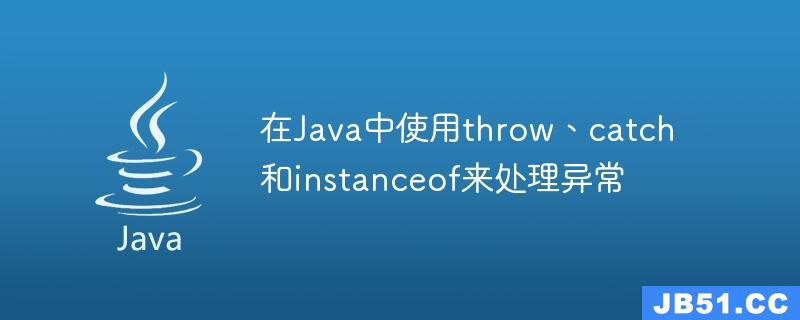
Exception handling is a fundamental aspect of Java programming that enhances the robustness of applications and promotes a seamless user experience. Key to this is understanding how to effectively use the throw, catch, and instanceof keywords to manipulate exceptions in Java. In this article, we will delve into the usage of these three mechanisms and illustrate how they collaboratively handle exceptions in Java.
Understanding Exceptions in Java
In Java, an exception is an event that disrupts the normal flow of a program. It's an object which is thrown by a method and caught by another method. The Java system itself can throw an exception, or a method can explicitly throw one using the throw keyword.
Exceptions can be either checked or unchecked. Checked exceptions must be declared in a method or constructor's throws clause if they can be thrown by the execution of the method or constructor and propagate outside the method or constructor boundary.
The Throw Keyword
在Java中,throw是一个关键字,允许你从任何方法或静态代码块中显式触发异常。要使用throw,你需要创建一个异常类(或其子类)的实例,然后使用throw来发出信号:
throw new Exception("This is an exception");
程序在throw语句之后立即停止执行。检查最近的try块,看它是否有与异常类型匹配的catch子句。如果有,控制转移到该catch块。
The Catch Keyword
catch 与 try 块一起使用。try 块中包含可能生成异常的代码,而 catch 块中包含处理异常的代码(如果发生异常)。
Here is an example of using try and catch
try {
// Code that might generate an exception
} catch (Exception e) {
// Code to handle the exception
}
If an exception occurs within the try block, the catch block that matches the exception type is executed. If no exception occurs, the catch blocks are skipped.
The Instanceof Keyword
的中文翻译为:Instanceof 关键字
instanceof是一个关键字,用于检查一个对象是否是特定类的实例。它可以在catch块中使用,以不同的方式处理不同类型的异常−
try {
// Code that might generate an exception
} catch (Exception e) {
if (e instanceof NullPointerException) {
// Handle NullPointerException
} else if (e instanceof IOException) {
// Handle IOException
}
}
在上面的代码中,instanceof检查异常对象e的类型。根据异常的类型,执行不同的处理代码。
Throw、Catch和Instanceof的结合力量
当结合使用throw、catch和instanceof时,可以提供强大而灵活的异常处理。您可以使用throw生成异常,使用catch处理异常,使用instanceof区分不同类型的异常。这使您能够创建健壮、易于调试并能够优雅处理所有类型异常的代码
结论
Exception handling is a pivotal component in Java programming, allowing developers to control the program flow and ensure its continuity even in the face of unexpected circumstances. The proper usage of throw, catch, and instanceof forms a solid foundation of exception handling, providing a robust approach to managing errors and exceptions in your applications.
以上就是在Java中使用throw、catch和instanceof来处理异常的详细内容,更多请关注编程之家其它相关文章!
版权声明:本文内容由互联网用户自发贡献,该文观点与技术仅代表作者本人。本站仅提供信息存储空间服务,不拥有所有权,不承担相关法律责任。如发现本站有涉嫌侵权/违法违规的内容, 请发送邮件至 [email protected] 举报,一经查实,本站将立刻删除。



